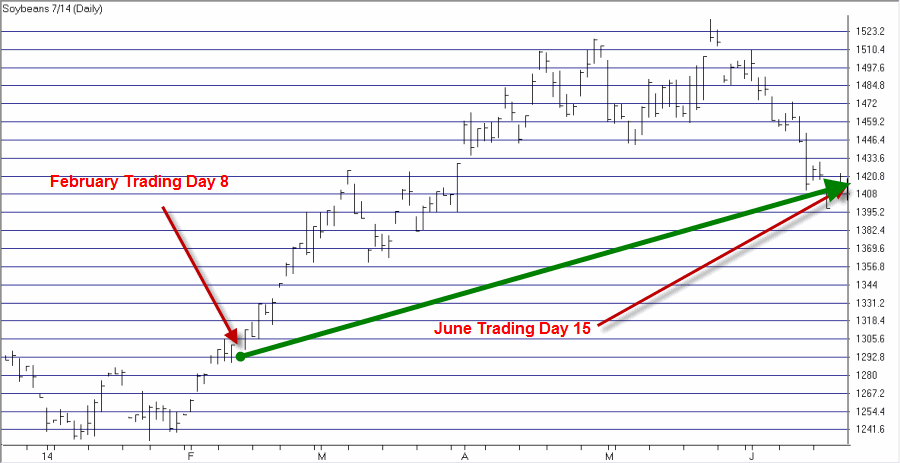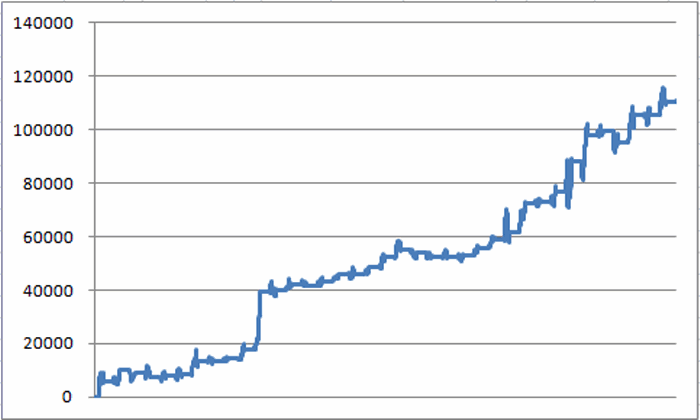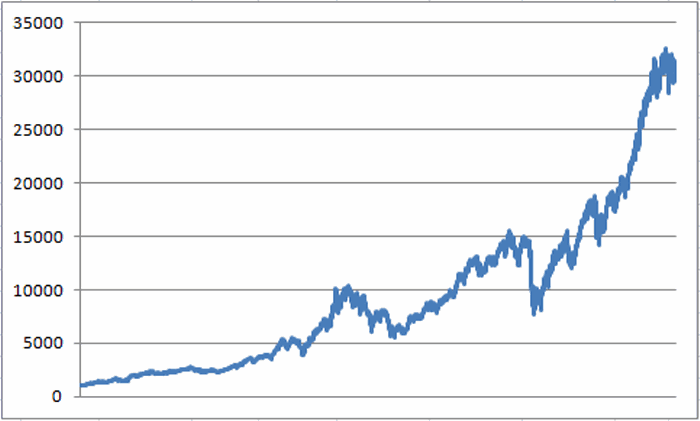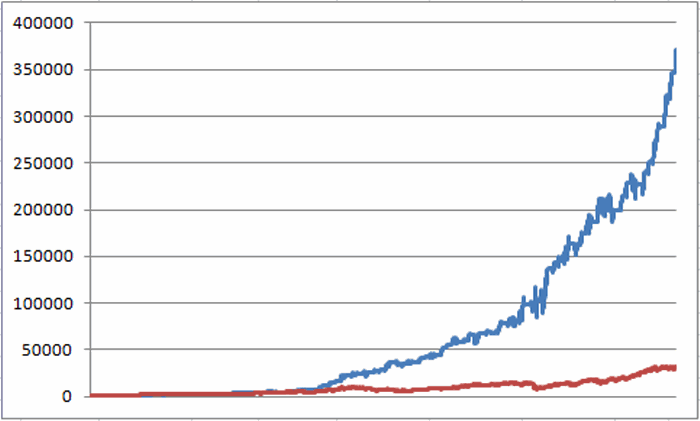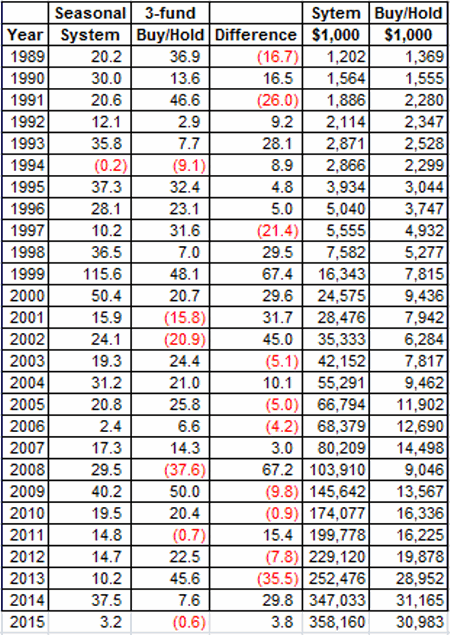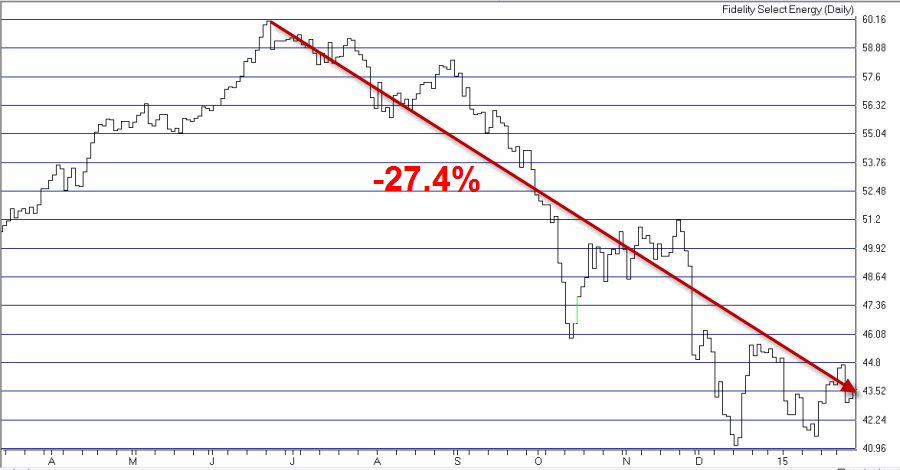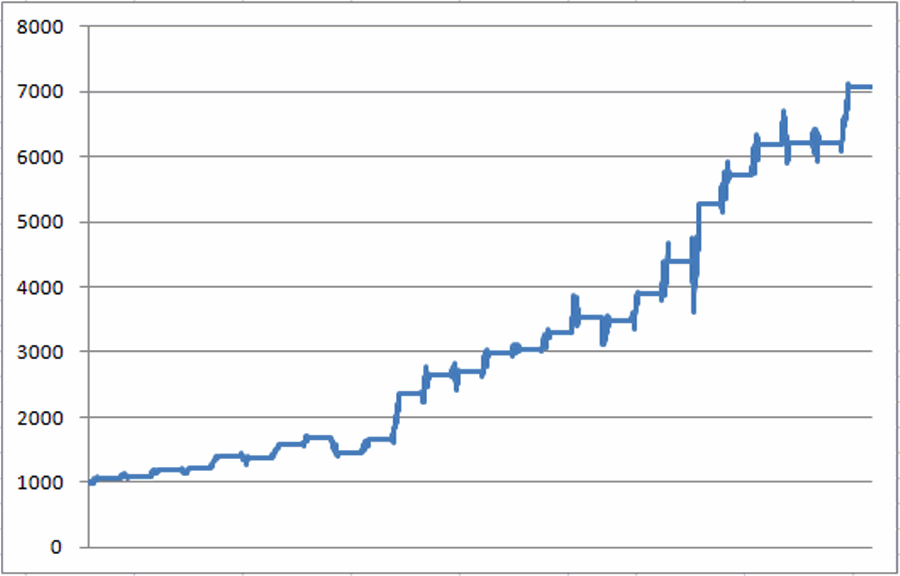Some people tell me that I have “too much time on my hands” because I spend so much time “crunching numbers.” I tell them “That’s ridiculous, I don’t have any time on my hands because I am so busy crunching numbers” (That usually shuts them up. At least for a little while).
In any event it is true that I am something of an “indicator junkie.” And it is also true that sometimes I multiply two numbers together (or divide two numbers) just “because I can.” And every once in awhile something potentially valuable seems to surface (see Applying VIX(like) Indicators to Stocks).
But in the most recent case I am hoping that someone can help me here. In the not too distant past I came across an indicator referred to by the acronym of MVCI – or at least that’s what I recorded it as. I just can’t remember where I read about it. In fact I don’t even recall what MVCI stands for.
But I like what I’ve seen of it so far.
The MVCI Indicator Calculations
OK, what follows is a list of a fairly lengthy set of calculations. If you are not a “numbers geek” you might consider skipping down to the actual results.
A = Daily High
B = Daily Low
C = Daily Close
D = 200-day moving average of daily closing prices
E = Daily True High (Today’s high or yesterday’s low, whichever is greater)
F = Daily True Low (Today’s low or yesterday’s high, whichever is lower)
G = Daily True Range (E-F)
H = Average Daily Price (A + B) / 2
I = 15-day Average of H
J = 15-day Average of G
K = MVCI = (C-I) / (J * Square Root of 2))
L = Buy Signal Cutoff Value
M = # days to hold a long position
Figure 1 displays an Excel spreadsheet with these calculations.
 Figure 1 – Excel spreadsheet for MVCI (whatever that means) Indicator
Figure 1 – Excel spreadsheet for MVCI (whatever that means) Indicator
Hmmm, maybe I do have too much time on my hands. But I digress. In (slightly long-winded) English, the indicator is calculated by:
1) Subtracting the 15-day average of the average daily price (defined as( [high]+[low]/2)) from today’s closing price, and dividing that result by;
2) The 15-day average of the Average True Range times the square root of 2
Don’t ask me how someone came up with multiplying something by the square root of 2 because, well, heck I don’t even know what MVCI stands for, so how would I know?
The default value for variable L is -0.51. The default value for M is 22 days.
A “Buy Signal” occurs when:
1) The closing price for SPY is above its 200-day simple moving average AND;
2) The MVCI value for that day is -0.51 or less. So when a buy signal occurs the trader buys SPY and holds it for 22 trading days.
If MVCI drops below -0.51 during these 22 days then the 22 day holding period starts again at 22, i.e., positions can be held for longer than 22 days.
Figure 2 displays the fluctuations of the MVCI since 12/31/2012 with the -0.51 level highlighted in red.  Figure 2 – The MVCI (whatever that means) indicator in action
Figure 2 – The MVCI (whatever that means) indicator in action
So in a nutshell, anytime SPY is above its 200-day moving average each day the MVCI is below -0.51 starts a 22 day holding period.
Crazy , right?
Well, maybe we should consider the results first.
The Results
OK, so SPY started trading in 1997, to get a 200-daymoving average we can start testing in June of 1998. If we start with $1,000 and invest in SPY for 22 trading days following any day where MVCI drops to -0.51 or below, we get the equity curve that appears in Figure 3. No interest is earned while out of the market and buying and holding SPY is also plotted in red. Figure 3 – Growth of $1,000 using MVCI (blue) versus Buying and Holding SPY (red); 1998-2015
Figure 3 – Growth of $1,000 using MVCI (blue) versus Buying and Holding SPY (red); 1998-2015
For the record:
-$1,000 invested in SPY using MVCI in the manner described here grew to $4,417 (+342%)
-$1,000 invested in SPY on a buy-and-hold basis grew to $1,848 (+84.8%)
Maybe not so crazy, right?
Summary
For the record, please note that I do not actually use this indicator at the moment in any of my trading, nor am I recommending that you start using it either. I have this rule – well, OK in the immortal words of Bill Murray “it’s more like a guideline” – that I don’t use indicators when I don’t even know what they’re freaking called.
But the purpose of this blog is not to offer “advice” or to tell you what to do. Its purpose is simply to educate you and give you some things to think about that you might not otherwise.
Like for instance, “What the heck does MVCI mean?”
Jay Kaeppel











